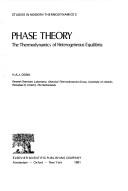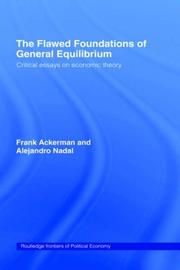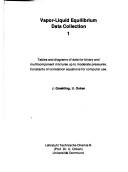Book
Year: 2017 Publisher: Washington, D.C. : The World Bank,
Abstract | Keywords | Export | Availability | Bookmark
 Loading...
Loading...Choose an application
- Reference Manager
- EndNote
- RefWorks (Direct export to RefWorks)
This paper uses a computable general equilibrium model Maquette for Millennium Development Goal Simulations (MAMS) calibrated to Mongolia to investigate how the development of major mining projects leads to Dutch disease. The simulations suggest that the process is complex, with the relative strength of the different spending and resource movement channels determined by structural features of the economy, such as factor input needs of the mining sector and substitution elasticities, and how mineral windfalls are eventually spent. In Mongolia, mining sector demand for domestic factor inputs explains two-thirds of the appreciation of the real exchange rate, with demand for labor, aquasi-fixed factor, the most potent channel for transmitting Dutch disease. The simulations also suggest that public policies may only play a limited role in limiting Dutch disease, even if growing fiscal revenues are channeled toward productivity-enhancing public investment rather than public consumption or lower taxes. This finding suggests that policy makers face real trade-offs, namely that, as an equilibrium response, Dutch disease is unavoidable and at odds with an export-led, manufacturing-oriented development strategy unless resources are left in the ground (or mining earnings are saved abroad). If the objective is to limit Dutch disease, then the simulations point to policies that minimize the usage of domestic inputs by the mining sector, or that accommodate the growing demand for key inputs such as labor e.g. through immigration. Regarding spending, policy makers should channel mining revenues toward public investment, to expand the economy's long-run supply potential. Where large direct income flows from the mining sector to households are important, monetary policy may be more useful than fiscal policy in constraining private spending.
CGE --- Computable General Equilibrium --- Dutch Disease --- Mams --- Mdgs --- Millennium Development Goal
Book
Year: 2017 Publisher: Washington, D.C. : The World Bank,
Abstract | Keywords | Export | Availability | Bookmark
 Loading...
Loading...Choose an application
- Reference Manager
- EndNote
- RefWorks (Direct export to RefWorks)
The ease with which workers can move between sectors has a strong impact on the effects on labor markets of shocks such as changes in world prices or migration flows. This paper introduces an approach to labor mobility with frictions under which worker capabilities (their efficiencies in different sectors) depend on their sector affiliation. If workers in sector a move to sector a', their efficiency shortfall due to a capability misfit compared to what is needed in a' (and possessed by workers already in a') is measured by a proximity parameter, 0 ? proxa,a' ? 1. If proxa, a' < 1, the efficient quantity reaching a' is below the physical quantity. In this setting, profit-maximizing producers are willing to pay the same wage per efficiency unit irrespective of worker origin and thus pay less efficient workers a lower wage per physical unit. This approach to labor mobility is tested in a static CGE model that is applied to an illustrative sub-Saharan African dataset with sector proximities defined using the approach of the product-space literature. Simulations of positive export price shocks show that, the higher the proximities, the stronger the labor reallocation and the welfare gains.
Computable General Equilibrium Models --- Development Planning And Policy --- Factor Mobility --- Labor Mobility --- Wage Differentials
Book
Year: 2019 Publisher: Washington, D.C. : The World Bank,
Abstract | Keywords | Export | Availability | Bookmark
 Loading...
Loading...Choose an application
- Reference Manager
- EndNote
- RefWorks (Direct export to RefWorks)
This study uses a computable general equilibrium model to analyze various policy scenarios for a carbon tax on greenhouse gas emissions from petroleum fuels and kerosene in Ethiopia. The carbon tax starts at USD 5 per ton of carbon dioxide in 2018 and rises to USD 30 per ton in 2030. Different scenarios examine the impacts with revenue recycling through a uniform sales tax reduction, reduction of labor income tax, reduction of business income tax, direct transfer back to households, and use by the government to reduce debt. Because petroleum fuels and kerosene are a relatively small part of the Ethiopian economy, the carbon tax has quite small impacts on overall economic activity while having a notable proportionate impact on greenhouse gas emissions from these energy sources, depending on the recycling scenario. The carbon tax can raise significant revenue-up to USD 800 million per year by 2030. The impacts on the poor through increased cost of living are not that large, since the share of the poor in total use of petroleum fuels and kerosene is small. In terms of income effects through employment changes, urban households tend to experience more impacts than rural households, but the results also depend on the household skill level and the revenue recycling scenario.
Carbon Tax --- CGE Model --- Computable General Equilibrium Model --- Distributional Impacts --- Environment --- Poverty Reduction --- Trade Policy
Book
Year: 2017 Publisher: Washington, D.C. : The World Bank,
Abstract | Keywords | Export | Availability | Bookmark
 Loading...
Loading...Choose an application
- Reference Manager
- EndNote
- RefWorks (Direct export to RefWorks)
This paper presents results from four simulations of the impact of potential tax reforms in Pakistan on poverty, shared prosperity, and inequality. The simulations are carried out in the context of a dynamic computational general equilibrium model that incorporates endogenous tax evasion. The simulations link the computational general equilibrium model to household survey data that are incorporated in a micro simulation model. The combined models suggest that equal yield increases in sales and corporate tax rates differ mildly in their impacts on consumption and poverty. Endogenously modeled tax evasion plays an important role in the results.
CGE Models --- Computable General Equilibrium Models --- Distributional Effects --- Tax Incidence --- Tax Reform --- Taxation

ISBN: 0444420193 9780444420190 0444417621 1299773826 0444599339 Year: 1981 Volume: 3 Publisher: Amsterdam Elsevier
Abstract | Keywords | Export | Availability | Bookmark
 Loading...
Loading...Choose an application
- Reference Manager
- EndNote
- RefWorks (Direct export to RefWorks)
Thermodynamics --- Phase rule and equilibrium --- 541.121 --- #KVIV --- Chemistry, Physical and theoretical --- Critical phenomena (Physics) --- Equilibrium --- Chemical equilibrium --- Chemical systems --- Critical point --- Chemical statics in general. Equilibrium in general --- 541.121 Chemical statics in general. Equilibrium in general --- Thermochemistry --- Heat
Book
ISBN: 0306335069 0306335050 1468425552 1468425536 Year: 1977 Publisher: New York Plenum
Abstract | Keywords | Export | Availability | Bookmark
 Loading...
Loading...Choose an application
- Reference Manager
- EndNote
- RefWorks (Direct export to RefWorks)
Statistical physics --- 531.19 --- 541.121 --- Statistical mechanics --- Chemical statics in general. Equilibrium in general --- Mechanics --- Mechanics, Analytic --- Quantum statistics --- Thermodynamics --- Chemistry, Physical and theoretical. --- Statistical mechanics. --- 541.121 Chemical statics in general. Equilibrium in general --- 531.19 Statistical mechanics

ISBN: 0415654866 0203799968 128005283X 0203694090 0415700019 0429234902 1135997381 9780203799963 0203682289 9780203682289 9786610052837 6610052832 9780415700016 9781135997380 9781135997335 9781135997373 9780415654869 1135997373 Year: 2004 Publisher: London ; New York : Routledge,
Abstract | Keywords | Export | Availability | Bookmark
 Loading...
Loading...Choose an application
- Reference Manager
- EndNote
- RefWorks (Direct export to RefWorks)
This book, as the title suggests, explains how General equilibrium, the dominant conceptual framework in mainstream economics, describes a perfectly impossible world. Even with its counterfactual assumptions taken for granted, it fails on many levels. Under the impressive editorship of Ackerman and Nadal, this book will appeal to students and researchers in economics and related social science disciplines.
Equilibrium (Economics) --- Economics --- Disequilibrium (Economics) --- Economic equilibrium --- General equilibrium (Economics) --- Partial equilibrium (Economics) --- DGE (Economics) --- DSGE (Economics) --- Dynamic stochastic general equilibrium (Economics) --- SDGE (Economic theory) --- Statics and dynamics (Social sciences)
Book
ISBN: 0080223443 1322260788 1483139840 Year: 1978 Volume: no. 17 Publisher: Oxford Pergamon
Abstract | Keywords | Export | Availability | Bookmark
 Loading...
Loading...Choose an application
- Reference Manager
- EndNote
- RefWorks (Direct export to RefWorks)
Phenanthroline --- Complex compounds --- Composés complexes --- 541.121 <083> --- Metal complexes --- Chemical statics in general. Equilibrium in general--Tabellen. Lijsten. Indices --(niet-bibliografische) --- 541.121 <083> Chemical statics in general. Equilibrium in general--Tabellen. Lijsten. Indices --(niet-bibliografische) --- Composés complexes

ISBN: 3921567017 Year: 1977 Publisher: Frankfurt am Main : Dechema,
Abstract | Keywords | Export | Availability | Bookmark
 Loading...
Loading...Choose an application
- Reference Manager
- EndNote
- RefWorks (Direct export to RefWorks)
541.121 <083> --- Chemical statics in general. Equilibrium in general--Tabellen. Lijsten. Indices --(niet-bibliografische) --- 541.121 <083> Chemical statics in general. Equilibrium in general--Tabellen. Lijsten. Indices --(niet-bibliografische) --- WATER --- ORGANIC COMPOUNDS --- VAPOR-LIQUID EQUILIBRIUM --- PROPERTIES
Book
Abstract | Keywords | Export | Availability | Bookmark
 Loading...
Loading...Choose an application
- Reference Manager
- EndNote
- RefWorks (Direct export to RefWorks)

 Search
Search Feedback
Feedback About
About Help
Help News
News